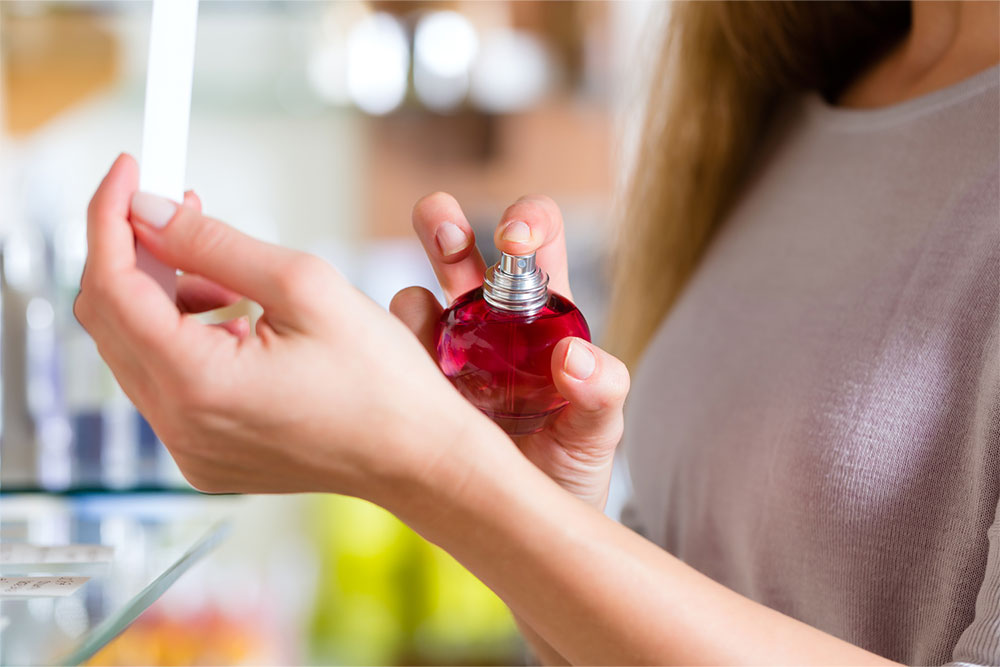8 common odors that cause migraines

A migraine is not just any other headache; it is an attack that causes severe throbbing pain on one side of the head. Migraines are accompanied by severe nausea, vomiting, and increased sensitivity to sensory triggers like flashing lights and loud noises. Different types of migraines develop depending on the underlying trigger; one such trigger is smell. Here are several types of odors that can cause this headache to develop when exposed:
1. Perfumes and colognes
Fragrances used to counter body odor are also the most common triggers of migraine attacks among people. This type of headache is called an olfactory migraine attack, mainly triggered by the evaporation of strong chemicals at room temperature. Fragrances like perfumes, deodorants, and antiperspirants, for example, contain compounds that directly interact with the central nervous system. It can also affect blood pressure, brain function, and pulse rate. It will take a couple of hours, but perfumes can cause persistent headaches.
2. VOCs
Volatile Organic Compounds (VOCs) are chemicals found in a number of commonly used products in and around the house. Cleaning supplies like detergents, chlorine bleach, dishwashing liquids, rug cleaners, furniture polish, oven cleaners, and even dry cleaning liquids all contain toxic compounds that shouldn’t be inhaled. People with migraines should be extra careful about exposure to the mildest of VOCs, as it can immediately trigger a painful headache that persists. When inhaled, these compounds trigger a nerve response that can result in migraine flare-ups of varying intensities.
3. Certain substances
Direct or indirect exposure to products that release certain lung-harming chemical substances into the bloodstream can also trigger migraine attacks. The odor of these fumes released upon burning such products is pungent and very heavy to breathe, resulting in headaches. Because these stimulants speed up nerve cell communications between the brain and the body, the severity of the headache depends on the intensity of the odor and the duration for which one remains exposed to these odors.
4. Cooking odors
Different types of foods produce pungent and strong odors that are released upon cooking on high heat. Some people develop an intolerance to these odors and, as a result, experience sudden headaches when exposed lightly to these fumes. The brain contains special scent receptors that are activated when one inhales certain odors, and as a result, it also triggers the pain response, causing the headache. Some types of cuisine that focus on fermented produce can also increase the sensitivity to such intolerance and trigger a migraine in the process. Common triggers include aged cheese, fermented pickles, cured meats, and even meats cooked on a high flame.
5. Flowers and vegetation
It is quite surprising that natural flowers and certain types of vegetation that release strong fumes are also migraine triggers. In fact, it’s not so much the odor but the fact that these types of flowers and vegetation are pollinating, meaning they release millions of spores into the atmosphere that one inhales around the vicinity. Inhaling the pollen released can worsen headaches for people who are already quite sensitive to smells and are more prone to developing certain types of allergies—the risk of chronic migraines from these pollinating flowers.
6. Dust mites and pet dander
Pets have thick fur that can harbor a lot of bacteria, dust mites, and dander that rots away under the thick coats. As a result, the smell coming from their coat can be very pungent and unpleasant to deal with, especially when exposed repeatedly. Pet dander is actively released into the atmosphere indoors and can be easily inhaled, causing allergies to develop. Allergic reactions also increase the incidence of migraines, and the unpleasant odor only worsens that symptom.
7. Exhaust fumes and particulate pollution
Pollution is one of the direct triggers of headaches and migraines. The fumes from the exhausts of vehicles, industrial plants, and chemical units are a mix of dangerous, volatile organic compounds that should not be inhaled in excess quantities. This type of pollution contains particulate matter that irritates the respiratory tract and increases the risk of chronic illnesses. The unpleasant odor released from burning fossil fuels and chemicals also affects the olfactory nerves and triggers pain receptors in the brain, thus resulting in a headache. There has been an increase in the number of migraine attacks reported to be triggered by exposure to gaseous fumes.
8. Air fresheners and candles
Even home fragrance products that counter pungent smells and unpleasant odors that develop in living spaces can trigger migraine attacks. Air fresheners are perfumes in an aerosol format with compressed air that releases the fragrance. Inhaling the lingering fumes will affect the olfactory senses and irritate the receptors in the brain that perceive pain. As a result, just mild exposure to a spray of air freshener or aerosol product can cause headaches. At first, these headaches will be mild, but repeated exposure can worsen the attacks, leading to a migraine.
Note that many other factors simultaneously influence the development of migraines. Odors are just one of the primary triggers, and several odors cause migraines with varying intensities. Apart from this, stress levels dictate the intensity of migraines among people of all ages. Higher cortisol levels will worsen the attacks. Hormonal changes experienced by women during menstruation, pregnancy, or post-menopause will also affect one’s migraine development. Changes in the weather that are rapid and unexpected will also affect the incidence of migraines.
If migraine persists despite limiting exposure to these odors, it is necessary to get other underlying health complications and causes checked to pinpoint the exact trigger. Migraine, unlike headaches, can seriously affect the quality of a person’s life and disrupt their daily routine.

